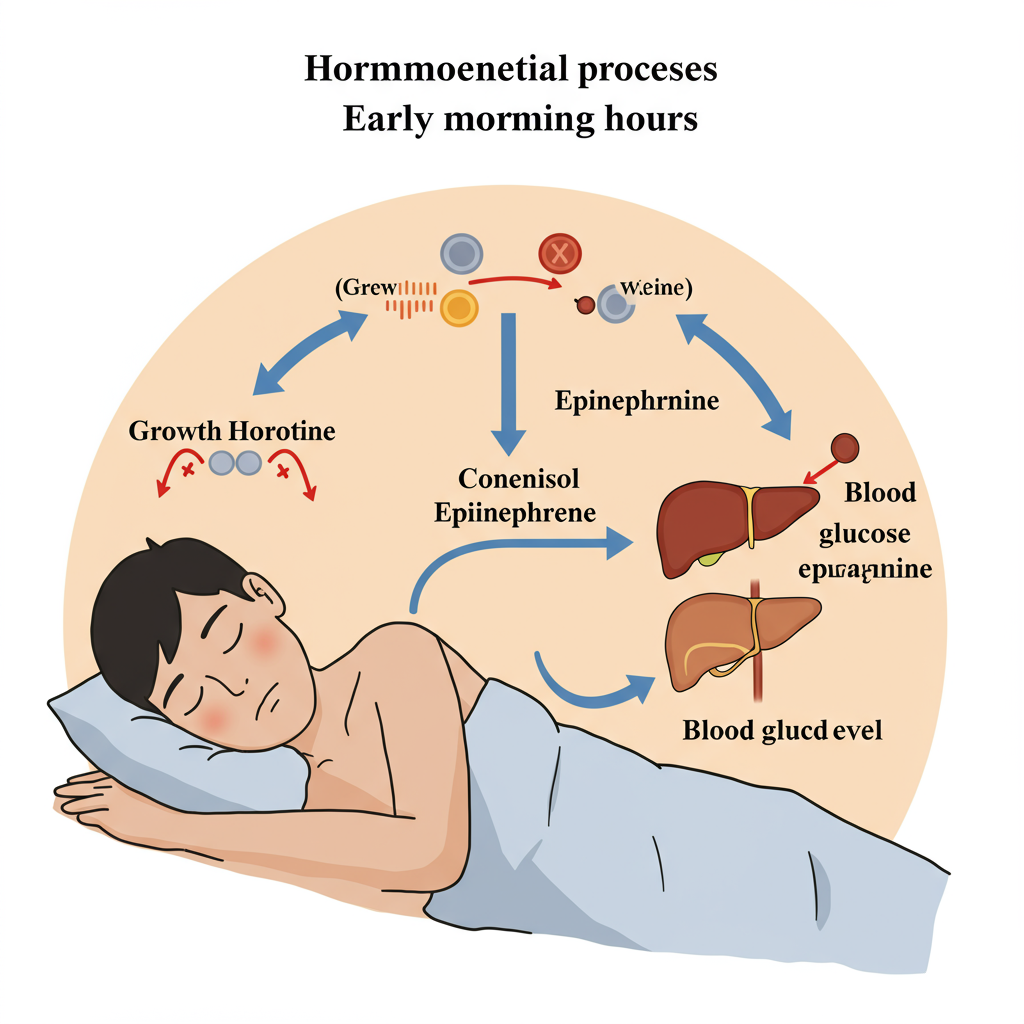Understanding the Dawn Phenomenon: Why Your Morning Blood Sugar Spikes
If you're living with diabetes, you may have noticed a puzzling pattern: higher blood glucose readings first thing in the morning, even when you haven't eaten anything since the night before. This common occurrence, known as the "dawn phenomenon," affects many people with both Type 1 and Type 2 diabetes. Let's explore the science behind this physiological process, understand why it happens, and discover practical strategies to manage it effectively.
What Exactly Is the Dawn Phenomenon?
The dawn phenomenon refers to an abnormal early-morning increase in blood glucose levels, typically occurring between 3 AM and 8 AM. This natural process happens in everyone, diabetic or not, but becomes particularly problematic for those with diabetes.
For people without diabetes, the body seamlessly compensates for this rise with increased insulin secretion. However, if you have diabetes, your body either doesn't produce enough insulin (Type 1) or can't use it effectively (Type 2), resulting in those frustrating elevated morning readings.
This isn't the same as the Somogyi effect, which is a rebound high blood sugar that occurs after an episode of nighttime hypoglycemia. The dawn phenomenon happens without prior low blood sugar episodes and is purely a result of normal hormonal changes during sleep.

The Hormonal Orchestra Behind Morning Glucose Spikes
The science behind the dawn phenomenon is fascinating and centers around a complex interplay of hormones. During the early morning hours, your body naturally prepares for waking by releasing several counter-regulatory hormones:
-
Growth hormone: Released during deep sleep stages, it promotes cellular repair but also reduces insulin sensitivity.
-
Cortisol: This "stress hormone" peaks in the early morning hours as part of your circadian rhythm, signaling your liver to increase glucose production.
-
Glucagon: Works in opposition to insulin, instructing your liver to release stored glucose into the bloodstream.
-
Epinephrine (adrenaline): Also increases as you prepare to wake, contributing to insulin resistance and glucose production.

This hormonal surge serves an evolutionary purpose—ensuring adequate energy (glucose) availability for the day's initial activities. In healthy individuals, the pancreas responds by secreting more insulin to keep blood glucose levels balanced. For those with diabetes, this compensatory mechanism is impaired, resulting in the characteristic morning hyperglycemia.
Interestingly, the liver's increased glucose output during these hours (known as hepatic glucose production) is particularly significant. Research suggests the liver can increase glucose production by 20-30% during the dawn phenomenon, explaining why blood sugar levels can rise substantially even without food intake.
Managing the Dawn Phenomenon Effectively
While the dawn phenomenon can be frustrating, several evidence-based strategies can help minimize its impact:
Adjust medication timing and dosage:
- For insulin users, working with your healthcare provider to adjust basal insulin rates or long-acting insulin timing can be effective
- If you use a pump, programming a higher basal rate during the early morning hours may counteract the rise
- For those on oral medications, taking them at a specific time or using extended-release formulations might help
Strategic lifestyle modifications:
- Avoid carbohydrate-heavy evening meals, particularly those with high glycemic index foods
- Incorporate an evening protein snack, which can help stabilize overnight glucose levels
- Regular evening exercise may improve overnight insulin sensitivity, though intense late-night workouts might be counterproductive
Monitoring and technology:
- Continuous glucose monitoring (CGM) can be invaluable for identifying the timing and severity of your dawn phenomenon
- Using this data to create personalized interventions is far more effective than generic approaches

Address sleep quality:
- Poor sleep exacerbates the dawn phenomenon by increasing stress hormone levels
- Prioritize sleep hygiene practices like consistent sleep schedules and reducing screen time before bed
What works best varies significantly between individuals. The key is systematic experimentation under medical supervision to find your optimal approach.
Conclusion: A Phenomenon You Can Manage
The dawn phenomenon represents a natural biological process that becomes problematic in the context of diabetes. By understanding the underlying mechanisms and implementing targeted strategies, you can prevent these morning glucose spikes from derailing your diabetes management.
Remember that consistency in monitoring, medication, diet, and sleep habits provides the foundation for successfully addressing the dawn phenomenon. Work closely with your healthcare team to develop a personalized approach that fits your specific pattern and lifestyle.
With the right knowledge and tools, you can wake up to better numbers and start your day with more confidence and metabolic stability.
References:
Porcellati, F., Lucidi, P., Bolli, G. B., & Fanelli, C. G. (2013). Thirty years of research on the dawn phenomenon: lessons to optimize blood glucose control in diabetes. Diabetes Care, 36(12), 3860-3862.
Rybicka, M., Krysiak, R., & Okopień, B. (2011). The dawn phenomenon and the Somogyi effect - two phenomena of morning hyperglycaemia. Endokrynologia Polska, 62(3), 276-284.




